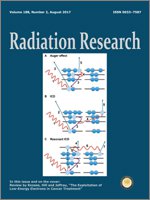Given the distinct characteristics of low-energy electrons (LEEs), particularly at energies less than 30 eV, they can be applied to a wide range of therapeutic modalities to improve cancer treatment. LEEs have been shown to efficiently produce complex molecular damage resulting in substantial cellular toxicities. Since LEEs are produced in copious amounts from high-energy radiation beam, including photons, protons and ions; the control of LEE distribution can potentially enhance the therapeutic radio of such beams. LEEs can play a substantial role in the synergistic effect between radiation and chemotherapy, particularly halogenated and platinum-based anticancer drugs. Radiosensitizing entities containing atoms of high atomic number such as gold nanoparticles can be a source of LEE production if high-energy radiation interacts with them. This can provide a high local density of LEEs in a cell and produce cellular toxicity. Auger-electron-emitting radionuclides also create a high number of LEEs in each decay, which can induce lethal damage in a cell. Exploitation of LEEs in cancer treatment, however, faces a few challenges, such as dosimetry of LEEs and selective delivery of radiosensitizing and chemotherapeutic molecules close to cellular targets. This review first discusses the rationale for utilizing LEEs in cancer treatment by explaining their mechanism of action, describes theoretical and experimental studies at the molecular and cellular levels, then discusses strategies for achieving modification of the distribution and effectiveness of LEEs in cancerous tissue and their associated clinical benefit.
How to translate text using browser tools
30 May 2017
The Exploitation of Low-Energy Electrons in Cancer Treatment
Mohammad Rezaee,
Richard P. Hill,
David A. Jaffray
ACCESS THE FULL ARTICLE

Radiation Research
Vol. 188 • No. 2
August 2017
Vol. 188 • No. 2
August 2017




